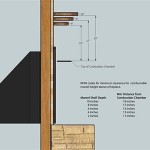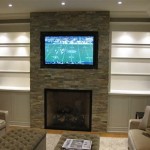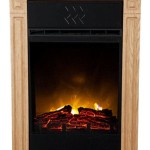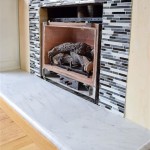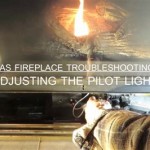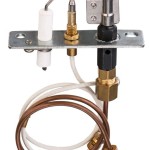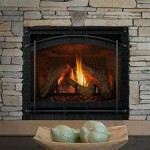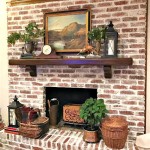Fireplace Chimney Vent Covers: A Comprehensive Guide
Fireplace chimney vent covers, also known as chimney caps, are essential components for maintaining the safety, efficiency, and longevity of a fireplace system. They serve multiple crucial functions, protecting the chimney from various external factors and preventing potential hazards. The selection and proper installation of a chimney vent cover are critical for ensuring the proper operation of a fireplace. This article will explore the various aspects of fireplace chimney vent covers, including their purpose, types, materials, selection criteria, installation process, and maintenance requirements.
Purpose of a Fireplace Chimney Vent Cover
The primary function of a chimney vent cover is to prevent rain, snow, and debris from entering the chimney flue. Water intrusion can lead to significant damage, including deterioration of the chimney liner, masonry, and even the firebox itself. Freezing and thawing cycles can exacerbate this damage, causing cracks and spalling in the brickwork. Debris such as leaves, twigs, and animal nests can obstruct the flue, reducing draft and potentially leading to dangerous carbon monoxide buildup inside the home. A well-chosen chimney vent cover effectively mitigates these risks, contributing to the safe and efficient operation of the fireplace.
Furthermore, a chimney cap acts as a barrier against animals such as birds, squirrels, and raccoons that may seek shelter inside the chimney. These animals can build nests that block the flue, creating a fire hazard and preventing proper ventilation. Removing animal nests can be a difficult and costly process. A properly installed chimney vent cover with a mesh screen prevents animals from entering the chimney while still allowing for proper airflow.
In addition to excluding water, debris, and animals, some chimney caps incorporate spark arrestors. These fine mesh screens prevent hot embers from escaping the chimney and potentially igniting nearby combustible materials, such as roofing shingles or dry leaves. Spark arrestors are mandatory in many areas prone to wildfires and are a recommended safety feature for any fireplace.
Types of Fireplace Chimney Vent Covers
Chimney vent covers are available in a wide variety of designs and materials, each offering different levels of protection and aesthetic appeal. The selection of the appropriate type depends on factors such as the chimney's dimensions, location, and prevailing weather conditions.
Standard Chimney Caps: These are the most common type of chimney vent cover, typically consisting of a metal hood supported by a mesh screen around the sides. They are relatively inexpensive and provide basic protection against rain, debris, and animals. Standard chimney caps are suitable for most chimneys in moderate climates.
Decorative Chimney Caps: These caps combine functionality with aesthetic appeal. They feature decorative elements such as ornate designs, copper accents, or custom shapes. While providing the same protective functions as standard caps, decorative caps enhance the visual appearance of the chimney and the home.
Multi-Flue Chimney Caps: These covers are designed to protect multiple flues within a single chimney structure. They are typically larger and more robust than single-flue caps, covering the entire top of the chimney. Multi-flue caps are often used in homes with multiple fireplaces or appliances venting through a single chimney.
Wind-Resistant Chimney Caps: These caps are designed to withstand high winds and prevent downdrafts, which can cause smoke to enter the home. They feature specialized designs, such as rotating vents or baffles, that redirect wind flow and maintain proper airflow through the chimney. Wind-resistant caps are particularly useful in areas with strong winds or tall trees surrounding the home.
Top-Mount Dampers: While technically not just vent covers, top-mount dampers serve a similar purpose while also providing the benefit of sealing off the chimney flue when the fireplace is not in use. This can significantly reduce heat loss and improve energy efficiency. Many top-mount dampers also incorporate a chimney cap to protect against rain and debris.
Materials Used in Chimney Vent Covers
The material used to construct a chimney vent cover significantly impacts its durability and lifespan. Common materials include stainless steel, galvanized steel, and copper. Each material offers different advantages and disadvantages in terms of cost, corrosion resistance, and aesthetic appeal.
Stainless Steel: This is the most durable and corrosion-resistant material for chimney vent covers. Stainless steel caps are resistant to rust, even in harsh environments, and can withstand high temperatures. They are a long-lasting investment that requires minimal maintenance. Stainless steel caps are generally more expensive than galvanized steel caps.
Galvanized Steel: Galvanized steel caps are coated with a layer of zinc to protect against rust and corrosion. They are less expensive than stainless steel caps but less durable. The galvanization can eventually wear away, particularly in areas with high levels of acidity in the air, leading to rust and corrosion. Galvanized steel caps typically have a shorter lifespan than stainless steel caps.
Copper: Copper chimney caps are highly decorative and offer excellent corrosion resistance. Copper develops a characteristic patina over time, adding to its aesthetic appeal. However, copper caps are the most expensive option and may be more vulnerable to theft. While corrosion-resistant, copper can react with certain other metals, so proper installation is essential.
The mesh screens used in chimney vent covers are typically made of stainless steel or galvanized steel. Stainless steel mesh is more durable and resistant to corrosion than galvanized steel mesh.
Selecting the Right Fireplace Chimney Vent Cover
Choosing the appropriate chimney vent cover requires careful consideration of several factors, including the chimney's dimensions, flue type, local climate, and aesthetic preferences. Accurate measurements are essential for ensuring a proper fit.
Chimney Dimensions: Measure the outside dimensions of the chimney, including the height and width of the flue tiles. The chimney cap should be at least 5 inches taller than the tallest flue tile to provide adequate draft. The cap should also be wide enough to cover the entire top of the chimney, preventing water from running down the sides.
Flue Type: Determine whether the chimney has a single flue or multiple flues. Single-flue chimneys require a single-flue cap, while multi-flue chimneys require a multi-flue cap. Ensure that the multi-flue cap is large enough to cover all of the flues and that the mesh screen is properly sized to prevent animal entry.
Local Climate: Consider the prevailing weather conditions in the area. In areas with heavy rainfall, choose a chimney cap with a large hood to prevent water from entering the flue. In areas with strong winds, choose a wind-resistant cap to prevent downdrafts. In areas prone to wildfires, choose a cap with a spark arrestor.
Material: Select a material that is appropriate for the climate and budget. Stainless steel is the most durable option, while galvanized steel is a more affordable option. Copper is a decorative option that offers excellent corrosion resistance.
Aesthetic Preferences: Choose a chimney cap that complements the style of the home. Decorative caps are available in a wide variety of designs and finishes. Consider the color and material of the chimney when selecting a cap.
It's always a good idea to consult with a qualified chimney sweep or contractor for guidance on selecting the appropriate chimney vent cover for a specific fireplace system.
Installation of a Fireplace Chimney Vent Cover
The installation of a chimney vent cover should be performed by a qualified professional to ensure proper fit and secure attachment. An improperly installed cap can be ineffective and may even pose a safety hazard.
Safety Precautions: Before beginning the installation process, ensure that the fireplace is not in use and that the chimney is cool. Wear appropriate safety gear, including gloves, eye protection, and a hard hat. If working on a high chimney, use a ladder that is properly secured and stable.
Chimney Preparation: Clean the top of the chimney to remove any debris, such as leaves, twigs, or animal nests. Inspect the flue tiles for cracks or damage and repair them as needed. Ensure that the chimney crown (the concrete top of the chimney) is in good condition.
Cap Attachment: Most chimney vent covers are attached using a variety of methods, including: utilizing an expandable leg kit that holds the cap securely inside the flue, using cement screws, or using a specialized adhesive. Ensure the cap is securely attached to the chimney to prevent it from being blown off by strong winds. Some caps require caulking around the base to prevent water from entering.
Proper Sealing: Ensure that the chimney cap is properly sealed to prevent water from entering the flue. Use a waterproof sealant to seal any gaps between the cap and the chimney. Check the seal regularly and reapply as needed.
Professional Installation: For complex installations or when working at heights, it is recommended to hire a qualified chimney sweep or contractor to install the chimney vent cover. Professionals have the necessary tools, experience, and safety equipment to ensure a proper and safe installation.
Maintenance of a Fireplace Chimney Vent Cover
Regular maintenance is essential for ensuring that a chimney vent cover continues to function properly and protect the chimney. Inspections should be performed at least once a year, preferably in the fall before the heating season begins.
Visual Inspection: Inspect the chimney cap for any signs of damage, such as rust, corrosion, or loose screws. Check the mesh screen for holes or tears. Make sure that the cap is securely attached to the chimney.
Debris Removal: Remove any debris that has accumulated on the chimney cap, such as leaves, twigs, or animal nests. Use a brush or vacuum cleaner to clean the mesh screen.
Corrosion Prevention: For galvanized steel caps, apply a rust-inhibiting paint to prevent corrosion. For stainless steel caps, clean with a mild detergent and water to remove any dirt or grime.
Professional Cleaning: Have the chimney professionally cleaned at least once a year to remove creosote and other buildup. A professional chimney sweep can also inspect the chimney cap and make any necessary repairs or replacements.
Regular inspections and maintenance can extend the lifespan of a chimney vent cover and prevent costly repairs to the chimney. Neglecting maintenance can lead to significant damage and safety hazards.

Co Linear High Wind Chimney Cap Rockford

Duravent 58dva Hc 5 X 8 Directvent Pro Square Horizontal Termination Cap Aluminum

Chimney Caps Shrouds Cover Installations In Atlanta Ga

Stainless Steel Chimney Cap Outside Mount Multi Flue Rockford

Stainless Steel Chase Covers Custom Made To Your Needs Rockford Chimney

Specstar 12 Cone Top Chimney Cap With Screen Round Roof Rain Cover Galvanized Steel Fireplace Exhaust Adjustable For Vent

Vevor Chimney Cap 6 Inch 304 Stainless Steel Round Roof Rain 11 81

Copper Top Mount Chimney Cap For Multi Flue Rockford

Specstar 4 Cone Top Chimney Cap With Screen Round Roof Rain Cover Galvanized Steel Fireplace Exhaust Adjustable For Vent Vh1380

Chimney Cap For 8dm Series Vent Pipe Fine S Gas

